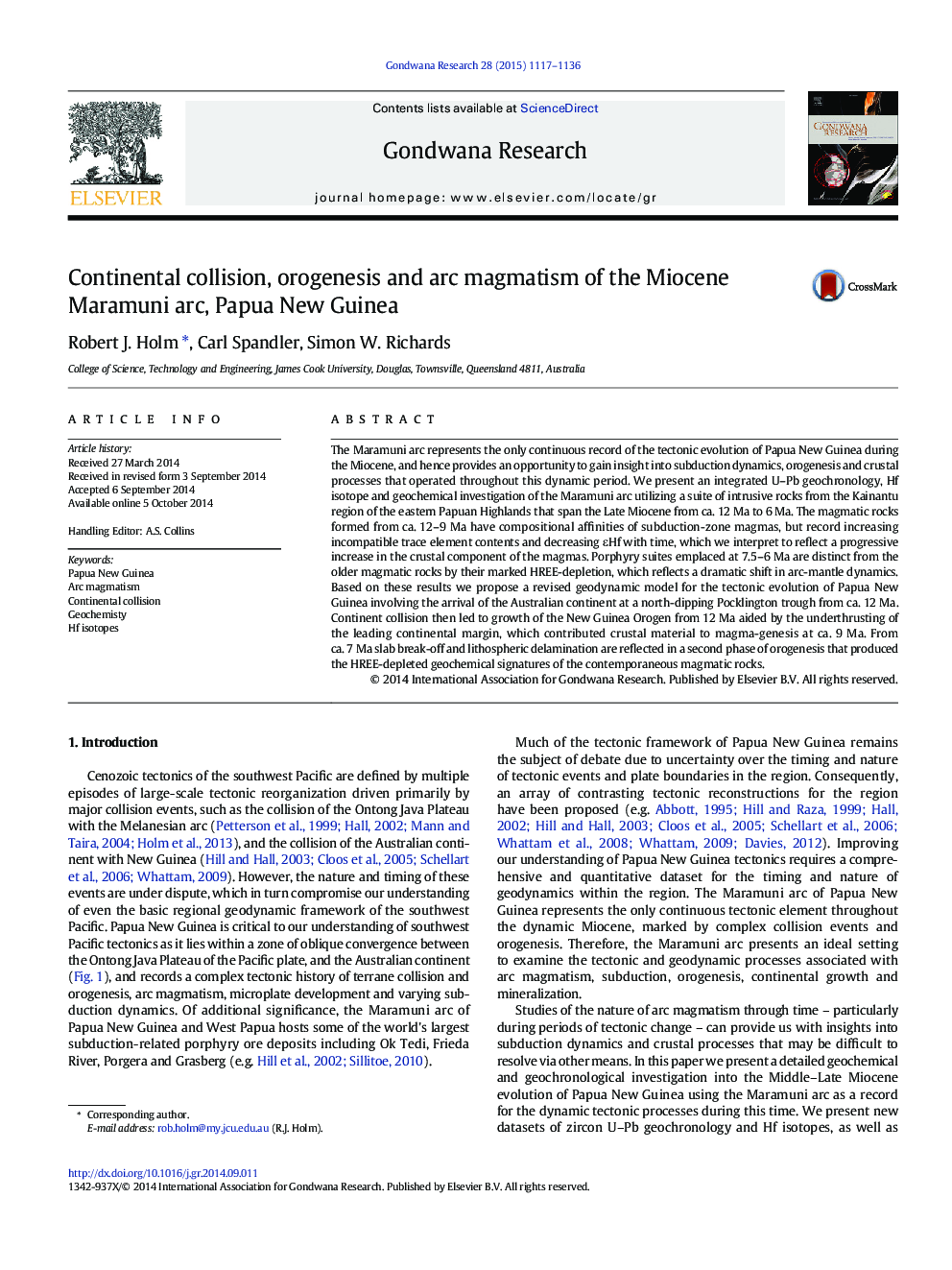| کد مقاله | کد نشریه | سال انتشار | مقاله انگلیسی | نسخه تمام متن |
|---|---|---|---|---|
| 4726728 | 1356344 | 2015 | 20 صفحه PDF | دانلود رایگان |

• We present the first detailed U–Pb, Hf and geochemical study of the Maramuni arc.
• A change in arc behaviour correlates with Australian continent collision with PNG.
• We present a new model for the Late Miocene tectonic evolution of PNG.
The Maramuni arc represents the only continuous record of the tectonic evolution of Papua New Guinea during the Miocene, and hence provides an opportunity to gain insight into subduction dynamics, orogenesis and crustal processes that operated throughout this dynamic period. We present an integrated U–Pb geochronology, Hf isotope and geochemical investigation of the Maramuni arc utilizing a suite of intrusive rocks from the Kainantu region of the eastern Papuan Highlands that span the Late Miocene from ca. 12 Ma to 6 Ma. The magmatic rocks formed from ca. 12–9 Ma have compositional affinities of subduction-zone magmas, but record increasing incompatible trace element contents and decreasing εHf with time, which we interpret to reflect a progressive increase in the crustal component of the magmas. Porphyry suites emplaced at 7.5–6 Ma are distinct from the older magmatic rocks by their marked HREE-depletion, which reflects a dramatic shift in arc-mantle dynamics. Based on these results we propose a revised geodynamic model for the tectonic evolution of Papua New Guinea involving the arrival of the Australian continent at a north-dipping Pocklington trough from ca. 12 Ma. Continent collision then led to growth of the New Guinea Orogen from 12 Ma aided by the underthrusting of the leading continental margin, which contributed crustal material to magma-genesis at ca. 9 Ma. From ca. 7 Ma slab break-off and lithospheric delamination are reflected in a second phase of orogenesis that produced the HREE-depleted geochemical signatures of the contemporaneous magmatic rocks.
Figure optionsDownload as PowerPoint slide
Journal: Gondwana Research - Volume 28, Issue 3, October 2015, Pages 1117–1136